Photos Life at the edge of the Amazon rainforest
Life is hard for settlers who live on the edge of the Amazon rainforest in Brazil. Logging, mining and cattle farming continue with the blessing of Brazilian President Jair Bolsonaro. But scientists say these activities are linked to the emergence of infectious disease. As people demolish forest, they not only accelerate global warming but also dramatically increase their risk of exposure to disease.
Lurking in mammals and birds are about 1.6 million viruses, some of which will be deadly when they leap to humans. The stakes turn catastrophic if a virus proves transmissible between people.
For people who live in settlements in northeastern Amazonas state â€" there are thousands of informal communities throughout the world’s largest rainforest â€" ongoing logging could imperil not only their children’s future but also that of the entire planet.
More pandemics like COVID-19 are on the way, scientists say, and the next one is likely to emerge in an area where people are encroaching on the natural world and erasing the buffer between themselves and habitats that existed long before a shovel cut this earth.
 A staff member at a wildlife research facility in Manaus feeds a sloth that is to be tested for pathogens. Veterinarians and researchers with the Oswaldo Cruz Foundation constantly track viruses in the Amazon jungle. (Luis Sinco / Los Angeles Times)
A staff member at a wildlife research facility in Manaus feeds a sloth that is to be tested for pathogens. Veterinarians and researchers with the Oswaldo Cruz Foundation constantly track viruses in the Amazon jungle. (Luis Sinco / Los Angeles Times) 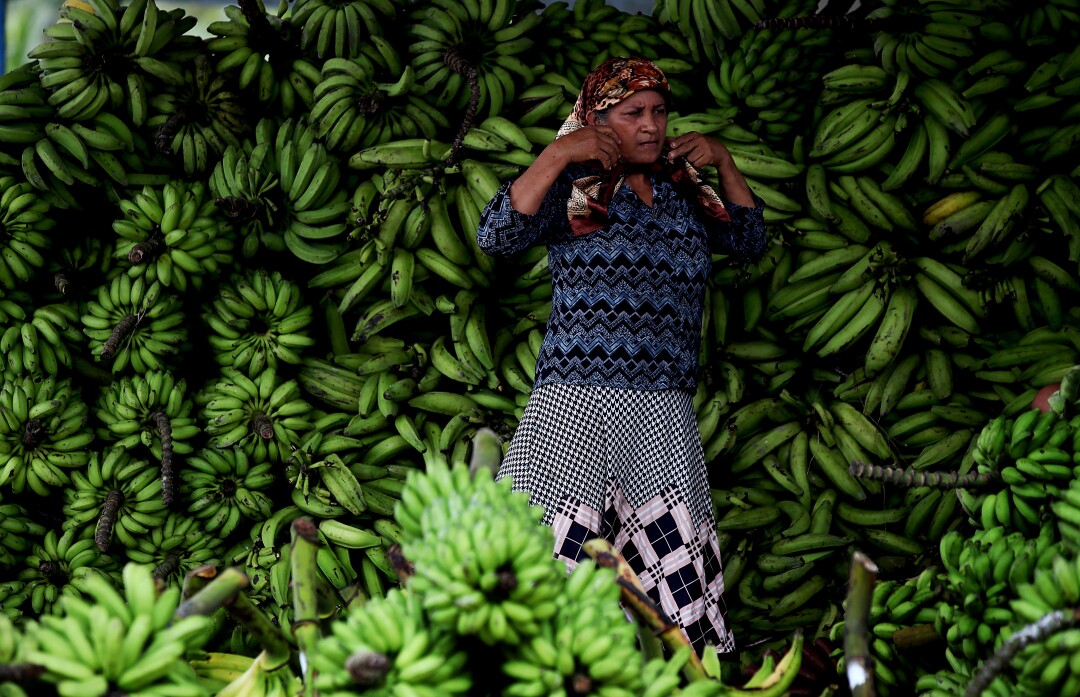 A woman inspects bananas in the market of Rumo Certo, an informal settlement in the rainforest about three hours north of Manaus. Rapid development in the area has replaced rainforest with highways, settlements and farms. “Every six months a new community is born here,†said one settler.(Luis Sinco / Los Angeles Times)
A woman inspects bananas in the market of Rumo Certo, an informal settlement in the rainforest about three hours north of Manaus. Rapid development in the area has replaced rainforest with highways, settlements and farms. “Every six months a new community is born here,†said one settler.(Luis Sinco / Los Angeles Times) 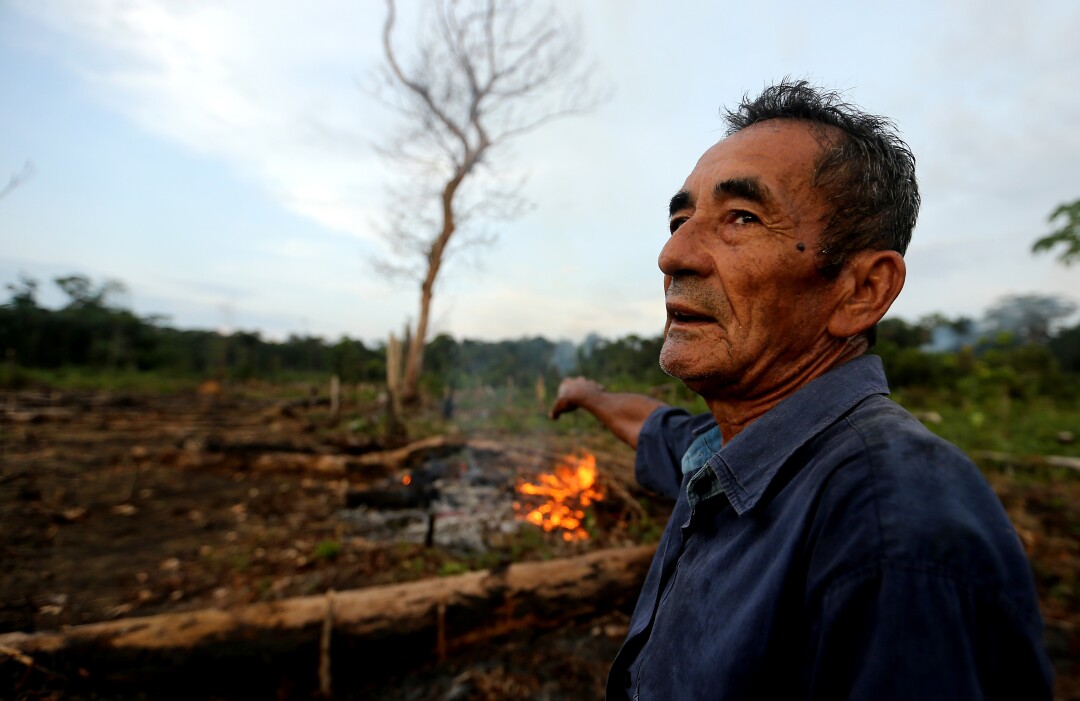 A settler clears a piece of land near the edge of the Amazon rainforest in Maruaga. Scientists say that having more people in closer contact with the wild animals of the jungle raises the risk of deadly viruses emerging in humans. (Luis Sinco / Los Angeles Times )
A settler clears a piece of land near the edge of the Amazon rainforest in Maruaga. Scientists say that having more people in closer contact with the wild animals of the jungle raises the risk of deadly viruses emerging in humans. (Luis Sinco / Los Angeles Times )  Residents of Tumbira, Brazil, play soccer as the sun sets on a field in the middle of town. (Luis Sinco / Los Angeles Times )
Residents of Tumbira, Brazil, play soccer as the sun sets on a field in the middle of town. (Luis Sinco / Los Angeles Times ) 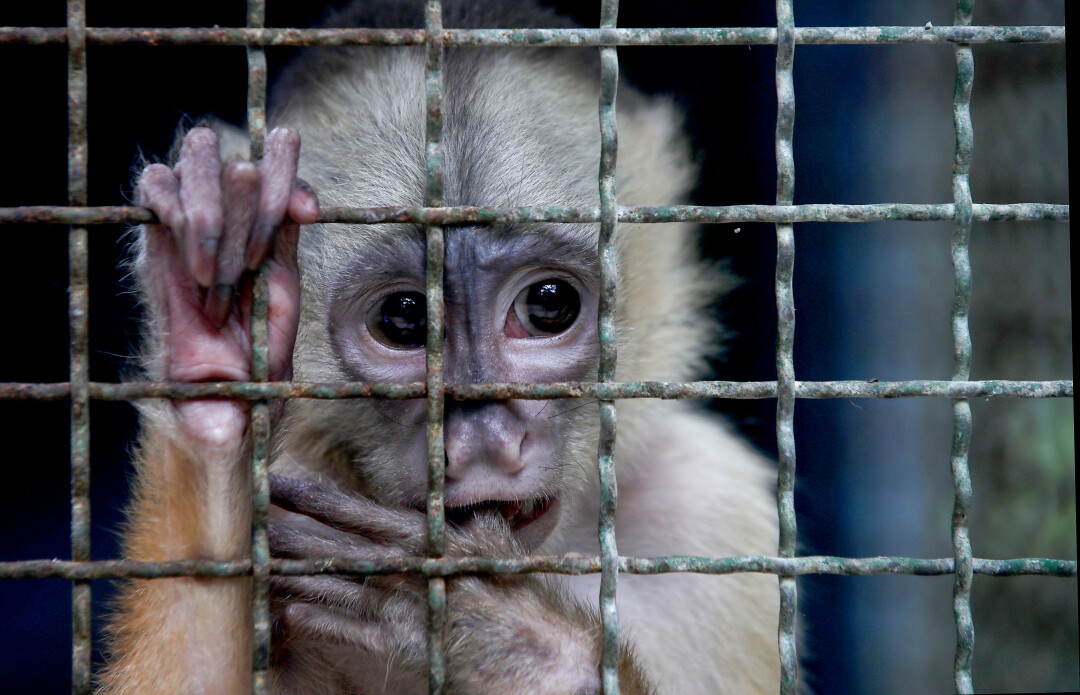 A primate looks out from its cage at a wildlife research facility in Manaus, Brazil, where it will be tested for pathogens. Reservoir hosts like the monkey can harbor many viruses without ever falling ill, and when those viruses make their way into humans, they can trigger an outbreak.(Luis Sinco / Los Angeles Times)
A primate looks out from its cage at a wildlife research facility in Manaus, Brazil, where it will be tested for pathogens. Reservoir hosts like the monkey can harbor many viruses without ever falling ill, and when those viruses make their way into humans, they can trigger an outbreak.(Luis Sinco / Los Angeles Times)  A worker tends to caged primates at a wildlife research facility in Manaus, Brazil. (Luis Sinco / Los Angeles Times)
A worker tends to caged primates at a wildlife research facility in Manaus, Brazil. (Luis Sinco / Los Angeles Times) 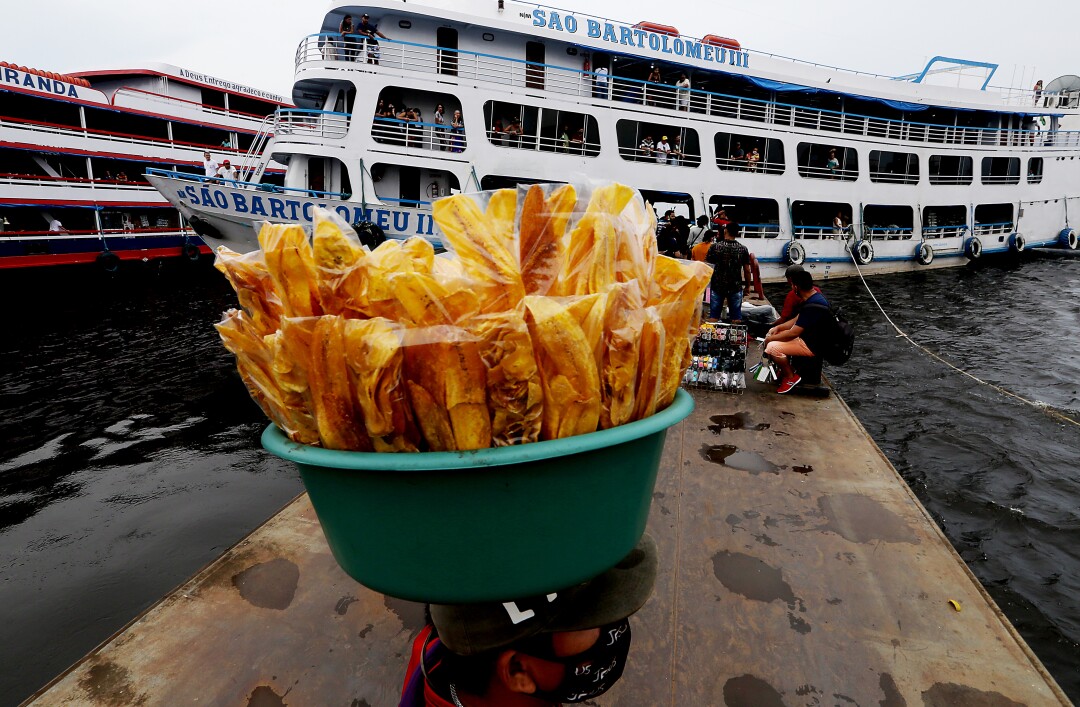 Vendors prepare to board a large riverboat as it docks in the Port of Manaus. There are no roads to Manaus, a city of 2 million people in northwestern Brazil. People travel here mainly by boat and airplane. It is a free import and export trade zone and the center for commerce, culture and transportation in the Amazon. (Luis Sinco / Los Angeles Times)
Vendors prepare to board a large riverboat as it docks in the Port of Manaus. There are no roads to Manaus, a city of 2 million people in northwestern Brazil. People travel here mainly by boat and airplane. It is a free import and export trade zone and the center for commerce, culture and transportation in the Amazon. (Luis Sinco / Los Angeles Times) 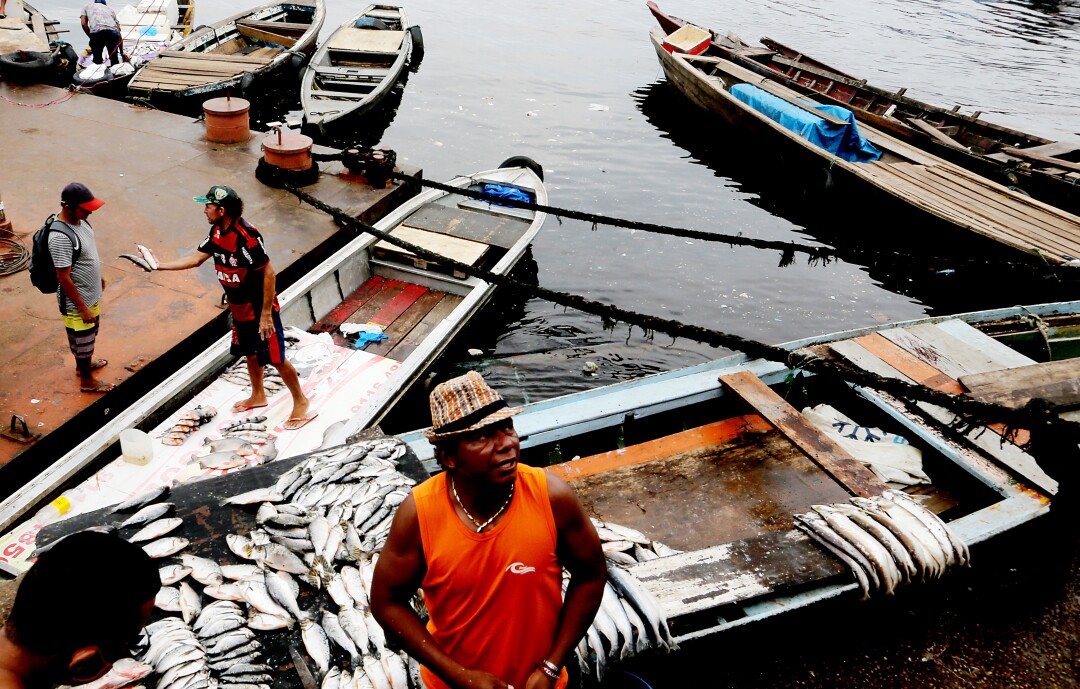 Fishermen sell their catch in the port of Manaus, Brazil. (Luis Sinco / Los Angeles Times)
Fishermen sell their catch in the port of Manaus, Brazil. (Luis Sinco / Los Angeles Times) 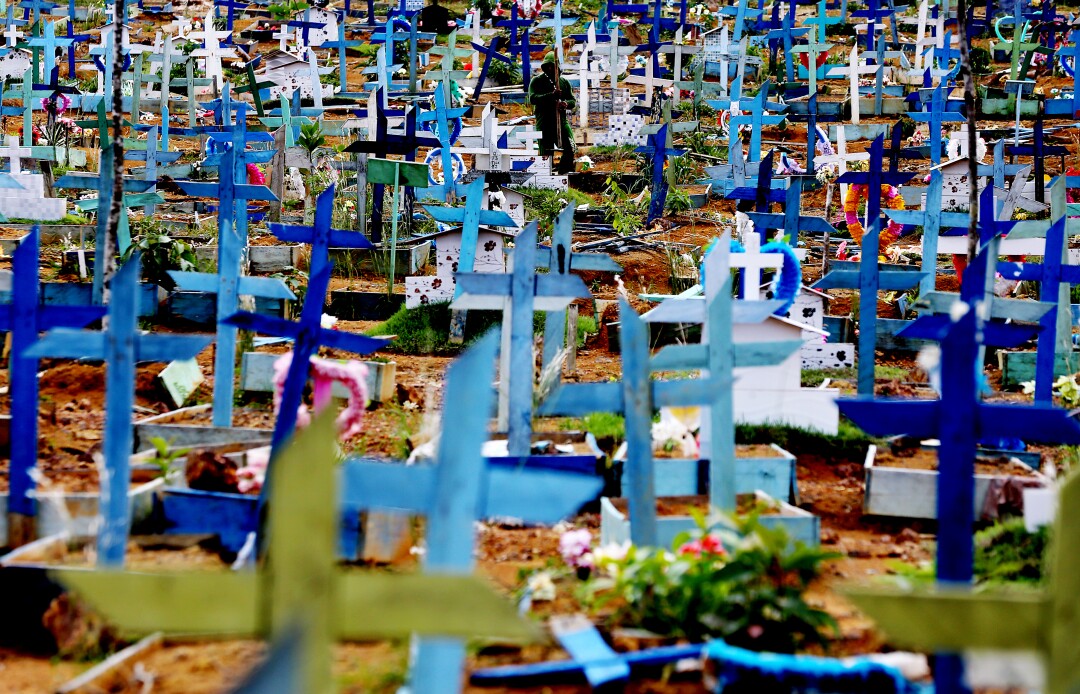 A worker at Parque Taruma cemetery in Manaus tends to the graves of victims of the pandemic. Few places have been as badly affected by COVID-19 as this city of 2 million people in the middle of the Amazon jungle. Officials had to bulldoze parts of the rainforest to make space for the dead. (Luis Sinco / Los Angeles Times )
A worker at Parque Taruma cemetery in Manaus tends to the graves of victims of the pandemic. Few places have been as badly affected by COVID-19 as this city of 2 million people in the middle of the Amazon jungle. Officials had to bulldoze parts of the rainforest to make space for the dead. (Luis Sinco / Los Angeles Times ) 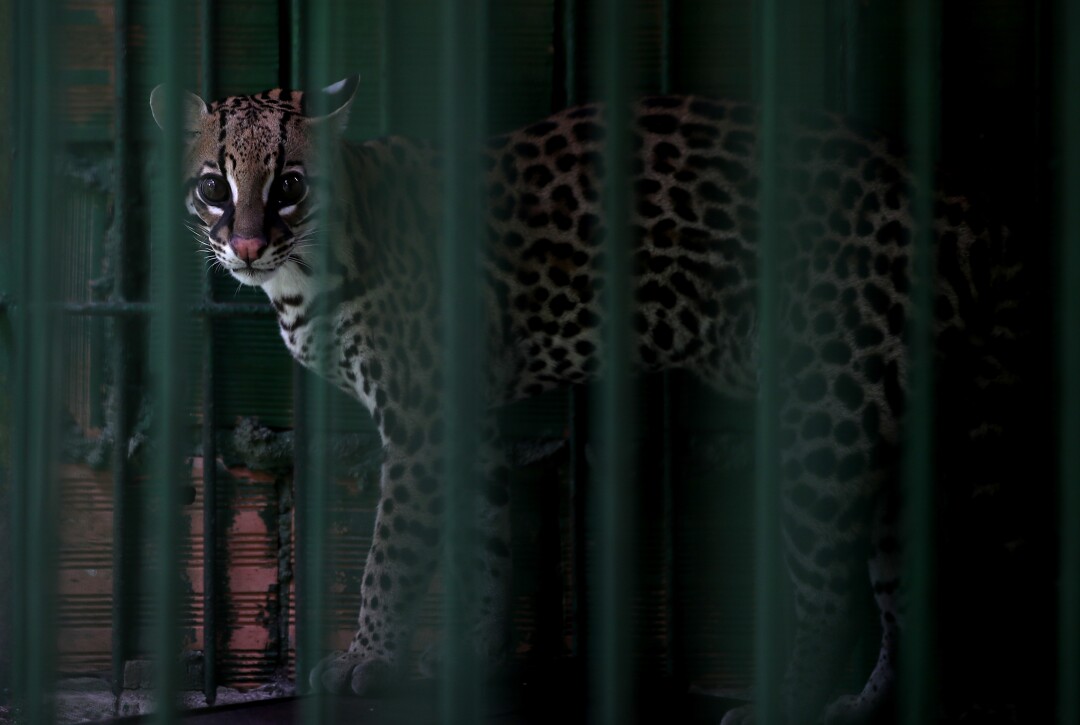 An ocelot at a wildlife research facility in Manaus, Brazil. The animal will be tested for pathogens. (Luis Sinco / Los Angeles Times)
An ocelot at a wildlife research facility in Manaus, Brazil. The animal will be tested for pathogens. (Luis Sinco / Los Angeles Times)  A villager burns brush to clear space for new tourist lodgings in Tumbira. A collection of woodcutters and their families founded the community generations ago. (Luis Sinco / Los Angeles Times )
A villager burns brush to clear space for new tourist lodgings in Tumbira. A collection of woodcutters and their families founded the community generations ago. (Luis Sinco / Los Angeles Times ) 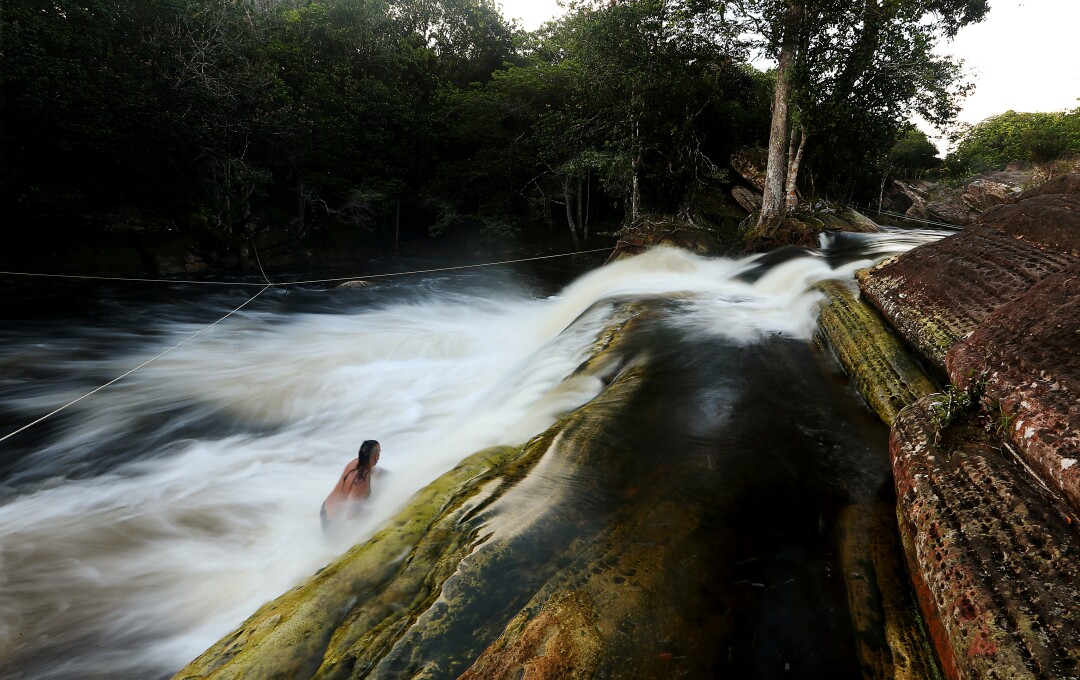 A visitor wades into falls along the course of a stream near Maruaga called Igarape Mutum. As deforestation of the Amazon continues, some communities are exploring the possibility of attracting more tourists to the jungle. (Luis Sinco / Los Angeles Times)
A visitor wades into falls along the course of a stream near Maruaga called Igarape Mutum. As deforestation of the Amazon continues, some communities are exploring the possibility of attracting more tourists to the jungle. (Luis Sinco / Los Angeles Times)
0 Response to "Photos Life at the edge of the Amazon rainforest"
Post a Comment